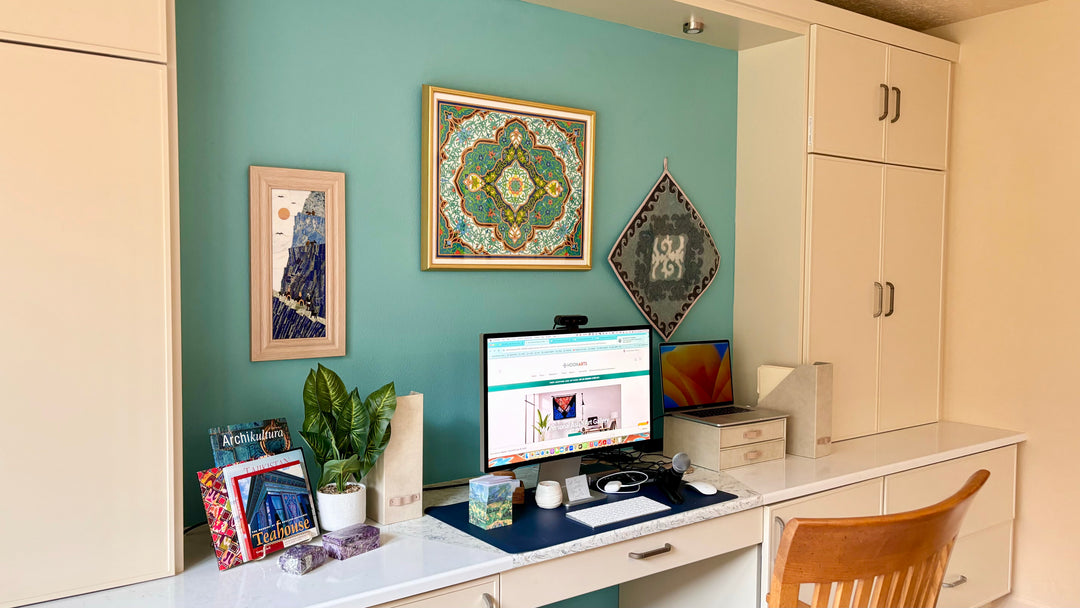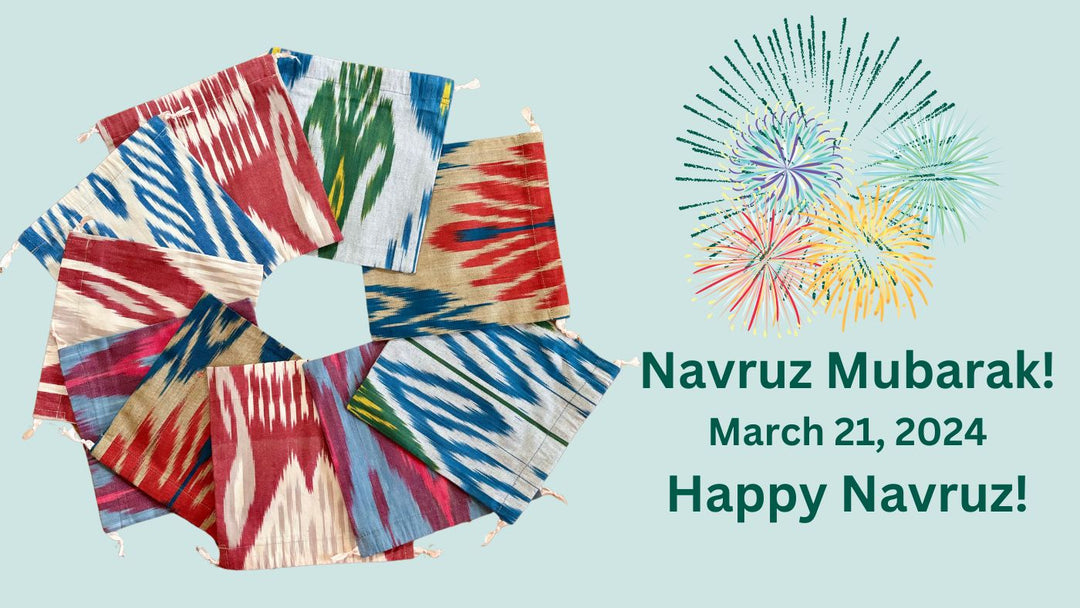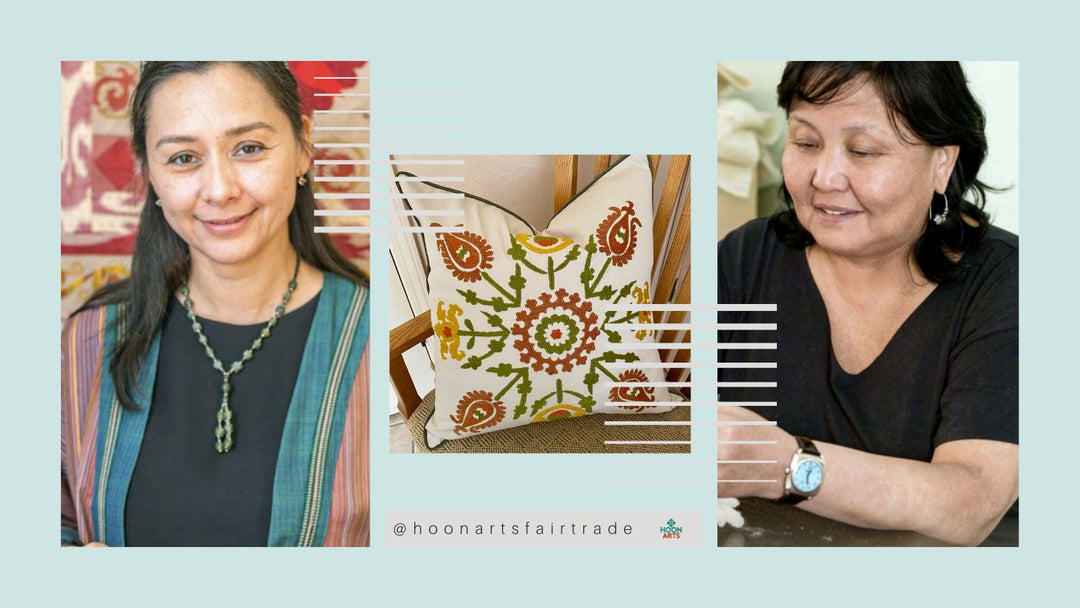As we launch our online store at HoonArts, we are proud to offer several unique handcrafted products from Tajikistan that have received the UNESCO Award of Excellence for Handicrafts (formerly known as the "Seal of Excellence").
These products include
(1) hand-carved wooden combs by Master Sodiq Zaripov,

(2) the aroma lamp and the teapot with cups by ceramics master Saidov Sukhrob, and 

(3) the "Tuppi" hanging ornaments from Munira Akilova at Arinumcrafts.
Soon we will be adding another award-winning product, the Panno "Marhamat" (wall hanging "Welcome") from Armughon Handicrafts, also designed by Munira Akilova.

So, what is the UNESCO Award of Excellence for Handicrafts?
The Award of Excellence for Handicrafts is a prestigious award aiming to encourage artisans to produce handicrafts using traditional skills, patterns and themes in an innovative way, in order to ensure the continuity and sustainability of these traditions and skills. The Award of Excellence is given to products and not to crafts producers. The Award of Excellence for Handicrafts was established in South East Asia in 2001 as a joint initiative by UNESCO and the ASEAN Handicraft Promotion and Development Association (AHPADA).
The program encourages craft-workers to use traditional skills and materials to ensure the perpetuation of traditional knowledge while acknowledging the importance of innovative and marketable designs. By setting quality standards for handicrafts, raising international awareness and promoting innovations to keep the products relevant and competitive, the Award aims to strengthen the interest for these crafts. Capacity-building and promotional activities also help artisans sustain a more viable livelihood and long-term employment. Due to the success of the program in South East Asia, the program expanded to not only Central, South, East and West Asia, but also in countries across Latin America, the Caribbean and North America.
The West-Central Asia group consists of two clusters: the Almaty cluster, including Kazakhstan, Kyrgyzstan, Tajikistan and Uzbekistan; and the Tehran cluster, including Afghanistan, Islamic Republic of Iran, Pakistan and Turkmenistan. The evaluation events have been rotating among the participating countries since the program inception. Although initiated and generally coordinated by UNESCO, several partner NGOs implement the program at regional and national levels. Awards are made annually.
The Award program includes 4 key objectives:
Objective 1: Establish rigorous standards of excellence for handicrafts
The Award of Excellence for Handicrafts Program aims to promote quality crafts that uphold rigorous standards of excellence. It aims to ensure that when consumers buy awarded handicrafts, they are buying high quality, culturally authentic products that have been manufactured in a socially-responsible manner with respect for the environment.
Objective 2: Encourage innovation
While it seeks to promote the continuation of traditional skills, the Award also encourages product innovation in order to ensure that handicrafts remain relevant, valuable, and marketable in modern life.
Objective 3: Offer training and support services
The Award program aims to provide capacity-building and training workshops to assist craft producers in the improvement of their product design and marketing, development of their markets, and protection of their intellectual property rights.
Objective 4: Provide new opportunities to ensure sustainability of handicraft industries
The handicraft sector plays an increasingly significant role in local economic development and poverty eradication. By providing new market opportunities, the program aims to enable handicraft producers to establish sustainable livelihoods. This will be achieved through developing networks of handicraft producers and buyers, including the higher-end of the market, and through exhibitions and trade fairs.
Evaluation Criteria
A product that is granted the Award of Excellence meets the highest level of craft excellence and is distinguished as a benchmark for craft production. An international panel of crafts experts evaluates submissions based on meeting ALL of the following four criteria:
-
Excellence
Demonstrated excellence and standard setting quality in craftsmanship: determined by the use of high quality materials, a high standard of technique and the special attention to manufacturing and finishing details.
-
Authenticity
Expression of cultural identity and traditional aesthetic values: demonstrated by a well-achieved application of aesthetic and cultural expression or traditional crafting techniques.
-
Innovation
Innovation in design and production: demonstrated by an effective and successful blend of traditional and contemporary, or inventive and creative use of material, design, and production processes.
-
Marketability
Marketability of the craft products with potential for the regional and/or international market: related to the functionality of the product, the safe use by potential buyers, a balanced price-quality relationship or the sustainability of production.
-
Eco-friendly
Respect for the environment in materials and production techniques: Exemplified through the sustainable use of natural dyes, natural fibers, recycled materials and the use of materials and production processes that are environmentally friendly.
-
Fair
Social responsibility: The producer must affirm that no labor law or copyrights was violated and no individual or group was exploited unfairly at any stage in the production of a handicraft submitted for the Award program.
Definition of Handicrafts
These can be defined as products which are produced either completely by hand or with the help of tools. Mechanical tools may be used as long as the direct manual contribution of the artisan remains the most substantial component of the finished product. Handicrafts are made from raw materials and can be produced in unlimited numbers. Such products can be utilitarian, aesthetic, artistic, creative, culturally attached, decorative, functional, traditional, religiously and socially symbolic and significant.
(Adapted from the definition for crafts/artisan products at the UNESCO/ ITC International Symposium on Crafts and the International Market: Trade and Customs Codification Manila, Philippines, October 1997)







Leave a comment